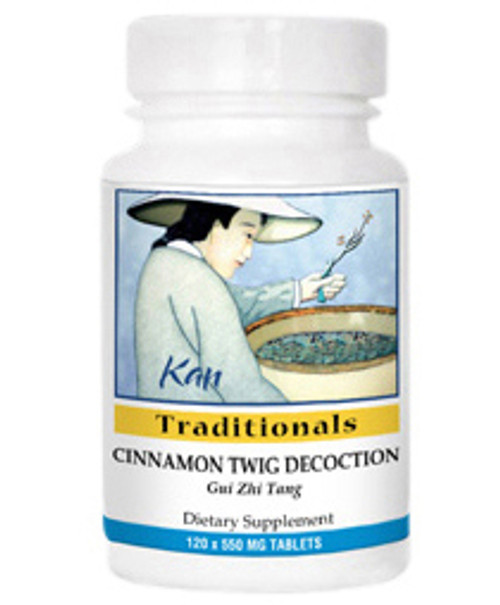Cinnamon Twig Decoction, 300 tablets
| Unit Size | 300 |
| Potency | 7:1 |
| Properties | Supports a weakened constitution, such as after childbirth or after serious illness |
| Contraindications | Nor for use with Wind Cold invasion with Interior Heat. Use with caution in warm weather. |
| Chinese Symptomology | Occasional upper respiratory tract disturbances with aversion to wind without sweating; Occasional nasal congestion |
| Actions | Regulates Protective and Nutritive Qi, releases pathogenic Wind Cold |
| Pattern | Exterior contracted Wind Cold leading to leading Exterior Cold deficiency |
| Tongue | Thin, white, moist coat |
| Pulse | Floating, may be frail or moderate |
| Recommendations | |
| Chinese name | Gui Zhi Tang |
| English name | Cinnamon Twig Decoction, 300 tablets |
Description
Cinnamon Twig Decoction is indicated for Wind Cold invasion. When attacked by Wind Cold, the body's Nutritive Qi, if left vulnerable by weakened Protective Qi, is no longer capable of fulfilling its function of containing fluids, which leads to sweating. Open pores directly expose the individual to the external environment; and entry of Wind Cold impairs Lung Qi from regulating the body's skin and nose, resulting in nasal congestion. Dy heaves may also result when Protective Qi and Nutritive Qi are incapable of mutually regulating. It is also common for the individual to feel a natural sensitivity or aversion to drafts, tenderness, stiffness, and pain in the muscle layer - headache, and stiffness in the neck and shoulders.* (Kan Herb Company)
Ingredients
| Pinyin Name | Common Name |
|---|
| Gui zhi | Chinese cinnamon twig |
| Bai shao | White peony root |
| Hong zao | Red jujube fruit |
| Zhi gan cao | Chinese licorice root (honey fried) |
| Gan jiang | Dried ginger rhizome |













